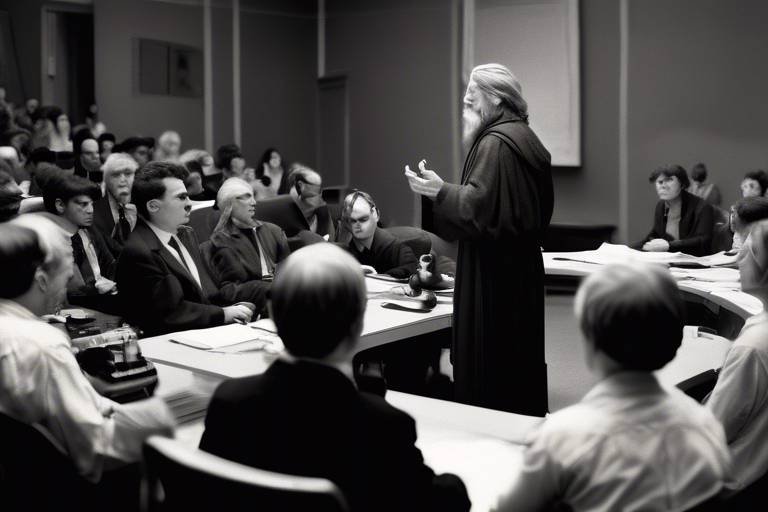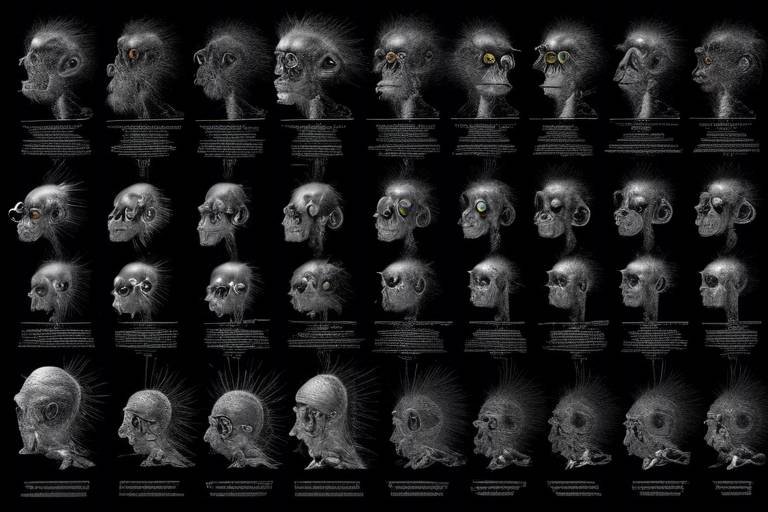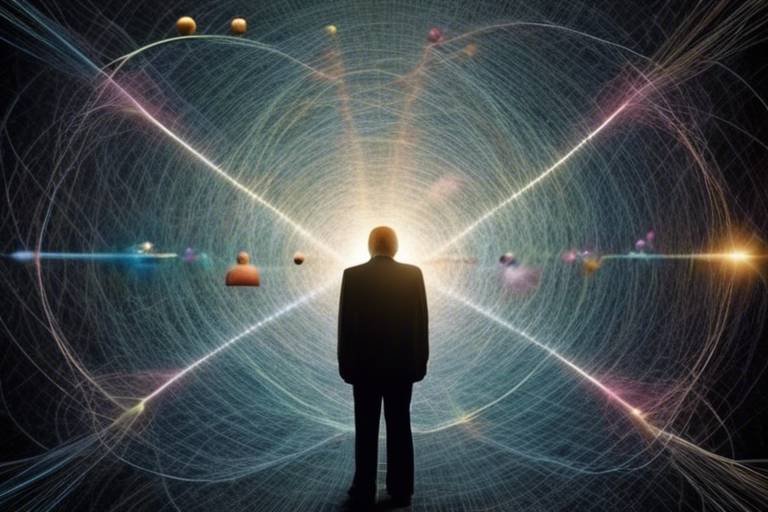Understanding the Metaphysics of the Subatomic World
Welcome to a journey that will take you beyond the ordinary and into the fascinating realm of the subatomic world. Have you ever pondered what lies beneath the surface of reality? What if I told you that the very essence of existence is intertwined with particles so small they defy our imagination? Subatomic particles, the fundamental building blocks of matter, challenge our traditional understanding of the universe and open the door to profound metaphysical questions. In this article, we will explore the intricate relationship between metaphysics and subatomic particles, delving into their implications for reality, existence, and the nature of the universe.
Subatomic particles are not just tiny specks; they are the foundation of everything we see around us. From the air we breathe to the stars twinkling in the night sky, these particles are the unseen architects of our reality. They come in various forms, including protons, neutrons, and electrons, each playing a unique role in the structure of atoms. But what makes these particles so intriguing is their peculiar characteristics. For instance, did you know that particles can exist in multiple states at once? This phenomenon challenges our conventional understanding of matter and raises profound questions about the nature of existence itself.
At the heart of our exploration lies quantum mechanics, a revolutionary framework that reshapes our perception of reality. Quantum mechanics provides the tools to understand the bizarre behavior of subatomic particles, revealing a world that operates under principles vastly different from our everyday experiences. Imagine a world where particles can be in two places at once or where the act of observation can alter the state of a particle. It sounds like science fiction, but this is the reality described by quantum mechanics. This section will delve into the core principles of quantum mechanics and how they challenge our understanding of what is real.
One of the most mind-bending concepts in quantum mechanics is wave-particle duality. This principle suggests that particles, such as electrons, can exhibit both wave-like and particle-like properties. Picture a ripple in a pond; it spreads out in waves, yet at the same time, it can also be pinpointed as a specific droplet of water. This duality fundamentally alters our comprehension of existence. It implies that reality is not as straightforward as we once thought. Instead of being confined to one state, particles can behave like waves, creating interference patterns that hint at a deeper, more complex reality.
The implications of wave-particle duality extend far beyond the laboratory. They challenge our metaphysical perspectives on existence. If particles can exist in multiple states, what does that mean for our understanding of reality? Are we merely observers in a universe that is constantly shifting and changing? This duality forces us to reconsider the very fabric of existence and our place within it. It raises questions about the nature of reality itself: Is it objective or subjective? Is it something we observe, or do we play a role in its creation?
To grasp the significance of wave-particle duality, we can look at various experiments that illustrate this phenomenon. One of the most famous is the double-slit experiment. In this experiment, particles are fired at a barrier with two slits, and what happens next is nothing short of astonishing. When both slits are open, particles create an interference pattern on the other side, suggesting they are behaving like waves. However, if we observe which slit a particle goes through, it behaves like a particle, and the interference pattern disappears. This experiment not only demonstrates wave-particle duality but also raises profound questions about the role of the observer in shaping reality.
Another captivating aspect of quantum mechanics is quantum entanglement. This phenomenon occurs when particles become interconnected in such a way that the state of one particle instantly influences the state of another, regardless of the distance separating them. Imagine a pair of gloves: if you find one glove, you instantly know the state of the other, even if it's miles away. This interconnectedness challenges our classical notions of locality and raises questions about the nature of information transfer and reality itself. Could entangled particles suggest that our universe is more interconnected than we ever imagined?
The metaphysical implications of subatomic phenomena lead to a variety of philosophical interpretations. As we delve deeper into the nature of reality, we encounter different perspectives that seek to explain our existence. Some philosophers argue for a realist view, suggesting that the world exists independently of our observations. Others lean towards anti-realism, positing that reality is shaped by our perceptions and consciousness. This section will explore these prominent theories and their implications for understanding the subatomic world.
The debate between realism and anti-realism is central to metaphysics and quantum theory. Realists assert that the subatomic world exists independently of our observations, while anti-realists argue that our perceptions play a crucial role in shaping reality. This philosophical tug-of-war raises questions about the nature of truth and existence. Are we merely passive observers, or do we actively create the reality we experience? The answers may lie in the very fabric of the quantum world.
The relationship between consciousness and the subatomic realm is a profound topic that invites speculation. Some theorists propose that consciousness itself might influence reality at the quantum level. Could our thoughts and intentions shape the behavior of subatomic particles? This idea echoes the ancient philosophical notion that the observer affects the observed. As we explore this relationship, we find ourselves standing at the intersection of science and spirituality, where questions of existence, awareness, and the universe converge.
- What are subatomic particles? Subatomic particles are the fundamental components of atoms, including protons, neutrons, and electrons.
- What is wave-particle duality? Wave-particle duality is the concept that particles can exhibit both wave-like and particle-like properties.
- What is quantum entanglement? Quantum entanglement refers to the phenomenon where particles become interconnected, influencing each other's states instantaneously regardless of distance.
- How does quantum mechanics relate to metaphysics? Quantum mechanics challenges traditional notions of reality, prompting philosophical inquiries about existence, consciousness, and the nature of the universe.

The Nature of Subatomic Particles
Subatomic particles are the fundamental building blocks of matter, existing in a realm so tiny that it often defies our everyday understanding of the physical world. These particles, which include protons, neutrons, and electrons, are not just minuscule; they are the very essence of what makes up everything around us—from the air we breathe to the stars that twinkle in the night sky. Imagine a universe composed of countless tiny Lego bricks, each representing a different particle, coming together to form the complex structures we see. This intricate assembly challenges our perception of reality and raises questions about what it truly means to exist.
At the heart of subatomic physics lies a fascinating variety of particles, each with unique properties and behaviors. For instance, quarks, which combine to form protons and neutrons, are never found in isolation; they are always bound together in groups. This is akin to a tightly-knit community where individuals cannot exist without their counterparts. On the other hand, electrons orbit around the nucleus of an atom, creating a delicate dance between attraction and repulsion, much like celestial bodies in the vastness of space.
To better understand the nature of these particles, let’s take a closer look at some of the primary types:
- Quarks: The building blocks of protons and neutrons, quarks come in six flavors: up, down, charm, strange, top, and bottom. They are never found alone, always existing in pairs or triplets.
- Leptons: This family includes electrons and neutrinos. Unlike quarks, leptons do not experience the strong nuclear force, which makes them unique in their interactions.
- Gluons: These are the force carriers for the strong force, binding quarks together. Think of them as the glue in our Lego analogy, holding everything together.
- Photons: The particles of light, photons are massless and travel at the speed of light, fundamentally altering our understanding of both light and energy.
The characteristics of these particles are equally intriguing. For example, particles can have a property called spin, which is a form of intrinsic angular momentum. This is not to be confused with literal spinning; instead, it’s a fundamental aspect of the particle that influences how it interacts with other particles. Imagine a dance floor where each dancer has a unique style; their spins and movements affect the overall choreography of the performance.
Moreover, the behavior of subatomic particles often challenges traditional physics. They can exist in multiple states simultaneously, a concept known as superposition. This means that at any given moment, a particle can be in various locations or states until it is observed or measured, similar to a coin spinning in the air—it’s both heads and tails until it lands. This phenomenon not only reshapes our understanding of existence but also invites us to ponder the very nature of reality itself.
In conclusion, the study of subatomic particles opens a Pandora's box of questions about the universe. It compels us to rethink our definitions of existence, reality, and the connections that bind us to the cosmos. As we delve deeper into this microcosmic world, we find that the answers are often as perplexing as the questions themselves. The nature of subatomic particles is not merely a scientific inquiry; it is a philosophical journey that invites us to explore the very fabric of our reality.
- What are subatomic particles? Subatomic particles are the fundamental constituents of matter, including protons, neutrons, and electrons.
- Why are subatomic particles important? They are essential for understanding the structure of atoms and the fundamental forces of nature.
- How do subatomic particles behave? Their behavior is governed by the principles of quantum mechanics, leading to phenomena such as superposition and wave-particle duality.
- What is the role of quarks? Quarks combine to form protons and neutrons, which are the building blocks of atomic nuclei.

The Role of Quantum Mechanics
Quantum mechanics is not just a branch of physics; it's a revolutionary lens through which we can examine the very fabric of reality. Imagine peering through a kaleidoscope, where the patterns shift and change with every turn. This is akin to how quantum mechanics reshapes our understanding of the universe. At its core, quantum mechanics challenges our classical notions of how particles behave. Instead of viewing particles as solid, indivisible entities, quantum mechanics reveals a world where particles can exist in multiple states simultaneously, much like a coin spinning in the air before it lands on heads or tails.
One of the most captivating aspects of quantum mechanics is its ability to explain phenomena that classical physics simply cannot. For instance, when we delve into the subatomic realm, we encounter a strange and counterintuitive reality where particles can be in two places at once or even influence each other instantaneously across vast distances. This behavior is not just theoretical; it has been confirmed through numerous experiments, leading us to question the very nature of existence itself.
To grasp the significance of quantum mechanics, it is essential to understand its foundational principles. These principles include:
- Superposition: This principle states that a quantum system can exist in multiple states at the same time until it is measured. It's like being in two places at once until someone checks where you are.
- Quantum Uncertainty: Formulated by Heisenberg, this principle posits that certain pairs of physical properties, such as position and momentum, cannot be simultaneously known to arbitrary precision. It's as if the universe plays a game of hide and seek with us.
- Quantum Entanglement: As we will explore later, entangled particles remain connected regardless of the distance separating them, suggesting a profound interconnectedness in the universe.
These principles highlight a key aspect of quantum mechanics: the inherent unpredictability of the subatomic world. Unlike classical physics, where outcomes can often be predicted with certainty, quantum mechanics introduces a level of randomness and probability. This unpredictability is not merely a limitation of our measurement tools; it is a fundamental characteristic of the universe. To illustrate this, consider the analogy of flipping a coin. While we can predict that it will land on either heads or tails, we cannot predict the outcome of a single flip. Similarly, quantum mechanics allows us to calculate probabilities but not certainties.
As we dive deeper into quantum mechanics, we find ourselves grappling with questions that blur the lines between science and philosophy. What does it mean for something to exist if it can be in multiple states? How does our observation influence reality? These questions lead us to the heart of metaphysical inquiry, making quantum mechanics not just a scientific discipline but a profound exploration of existence itself.
In summary, quantum mechanics serves as a pivotal framework for understanding the behavior of subatomic particles and challenges our conventional views of reality. Its principles not only revolutionize physics but also provoke deeper philosophical questions about the nature of existence. As we continue to explore this fascinating field, we will uncover more about how these quantum phenomena shape our understanding of the universe.
- What is quantum mechanics? Quantum mechanics is a fundamental theory in physics that describes the physical properties of nature at the scale of atoms and subatomic particles.
- How does quantum mechanics differ from classical physics? Quantum mechanics incorporates principles of uncertainty and superposition, where particles can exist in multiple states, unlike classical physics which assumes deterministic behavior.
- What are some real-world applications of quantum mechanics? Quantum mechanics has led to advancements in technology such as semiconductors, lasers, and quantum computing.

Wave-Particle Duality
Wave-particle duality is one of the most fascinating and mind-bending concepts in the realm of quantum mechanics. Imagine a world where the very essence of reality defies our traditional understanding; that’s precisely what wave-particle duality presents. It posits that particles, such as electrons and photons, can exhibit both wave-like and particle-like behaviors depending on how they are observed. This duality challenges our conventional notions of matter and forces us to rethink the fundamental nature of existence itself.
To grasp this concept, let's consider a simple analogy: think of a person who can switch between being a dancer and a singer. When you see them on stage dancing, you perceive them as a dancer, but when they pick up a microphone, they become a singer. Similarly, subatomic particles can be seen as waves when they are not being measured, spreading out and interacting with each other like ripples in a pond. However, the moment we observe them, they collapse into a specific state, behaving like particles. This phenomenon is not just a quirky characteristic of particles; it fundamentally alters our understanding of reality.
The implications of wave-particle duality extend far beyond the confines of physics; they resonate deeply within the realms of metaphysics and philosophy. If particles can exist in multiple states at once, what does that say about our own existence? Are we merely observers in a universe that is constantly shifting and changing, or do we play a role in shaping it? This question opens up a Pandora's box of philosophical inquiries, leading to discussions about the nature of consciousness and reality.
To illustrate this concept further, let's examine a classic experiment known as the double-slit experiment. In this experiment, particles such as electrons are fired at a barrier with two slits. When both slits are open, the particles create an interference pattern on a screen behind the barrier, indicative of wave-like behavior. However, if we attempt to measure which slit the particle goes through, the interference pattern disappears, and the particles behave like discrete particles. This experiment is a powerful demonstration of wave-particle duality and raises profound questions about the role of the observer in the quantum realm.
In summary, wave-particle duality is not just a peculiar trait of subatomic particles; it is a gateway to understanding the complex interplay between observation, reality, and existence. As we delve deeper into the mysteries of the universe, this duality challenges us to reconsider our perceptions and invites us to explore the intricate tapestry of reality that lies beneath the surface.
- What is wave-particle duality?
Wave-particle duality is the concept that particles, such as electrons and photons, exhibit both wave-like and particle-like properties depending on how they are observed. - How does the double-slit experiment demonstrate wave-particle duality?
In the double-slit experiment, particles create an interference pattern when not observed, indicating wave behavior. When measured, they behave like particles, collapsing the wave function. - What are the implications of wave-particle duality for our understanding of reality?
Wave-particle duality challenges traditional notions of matter and existence, suggesting that observation plays a crucial role in shaping reality.

Implications for Reality
The concept of wave-particle duality doesn't just tickle the fancy of physicists; it fundamentally challenges our very understanding of reality. Imagine for a moment that the world around you isn't as solid as it seems. Instead, at the subatomic level, particles can behave like both waves and particles, a duality that raises eyebrows and questions. This duality suggests that our traditional notions of existence might be too simplistic, leaving us to ponder: what does it mean to truly "exist"? Are we merely observing a façade of reality, one that masks a deeper, more complex foundation?
When we think about reality, we often envision a world governed by clear-cut rules and defined boundaries. However, the implications of wave-particle duality suggest a fluidity to existence that is both fascinating and perplexing. For instance, if particles can exist in multiple states simultaneously, what does this say about our perception of time and space? Are these dimensions merely constructs of our consciousness, or do they hold a more intricate relationship with the subatomic phenomena?
Moreover, this duality leads us to consider the role of the observer. In quantum mechanics, the act of measurement can influence the outcome of an experiment. This phenomenon hints at a profound connection between consciousness and reality. Could it be that our thoughts and perceptions shape the very fabric of what we deem to be real? This idea resonates with the philosophical notion that reality might not be an objective entity but rather a subjective experience shaped by our consciousness.
To illustrate these implications, consider the following table that summarizes some of the key philosophical questions arising from wave-particle duality:
| Question | Implication |
|---|---|
| What is the nature of reality? | Reality may be a blend of possibilities rather than a fixed state. |
| Does the observer influence reality? | The act of observation could alter the state of what is being observed. |
| Is existence subjective? | Our consciousness may shape our understanding of existence. |
As we delve deeper into these implications, it becomes evident that wave-particle duality not only reshapes our scientific understanding but also invites us to reconsider our philosophical and metaphysical perspectives. The boundaries between what is real and what is perceived begin to blur, leading to a reality that is both astonishing and bewildering. It challenges us to question the essence of existence itself, urging us to explore the mysteries that lie beneath the surface of our everyday experiences.
In conclusion, the implications of wave-particle duality extend far beyond the realm of physics. They beckon us to engage in a dialogue about the nature of reality, consciousness, and existence. As we navigate through this intricate web of ideas, we may find that understanding the subatomic world is not just about particles and waves, but also about the very essence of what it means to be alive and aware in this vast universe.
- What is wave-particle duality? Wave-particle duality is a fundamental principle of quantum mechanics, indicating that particles can exhibit properties of both waves and particles.
- How does wave-particle duality affect our understanding of reality? It suggests that reality may not be as fixed as we perceive, and that consciousness could play a role in shaping it.
- What is the significance of the observer effect? The observer effect highlights that the act of observation can influence the behavior of subatomic particles, raising questions about the relationship between consciousness and reality.
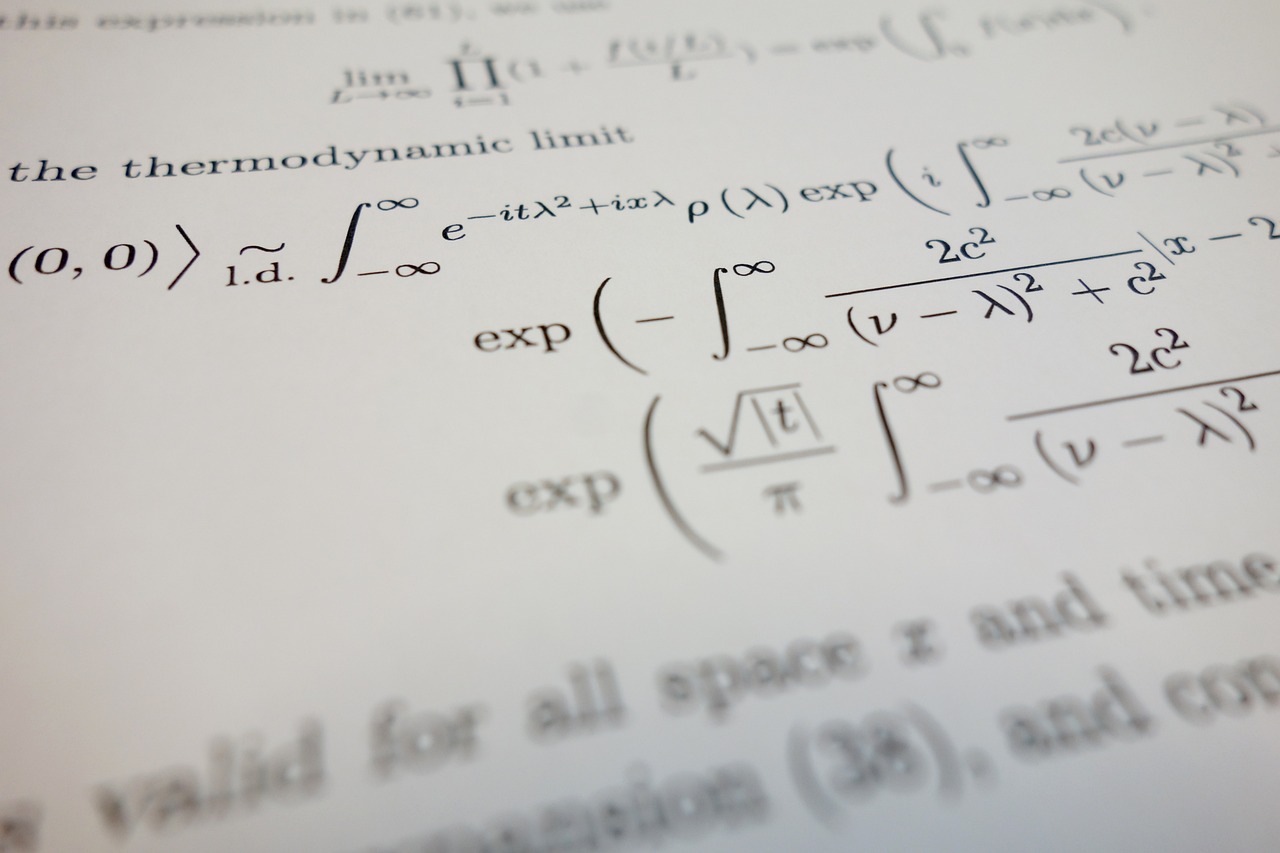
Experiments Demonstrating Duality
The concept of wave-particle duality is not just a theoretical notion confined to the pages of physics textbooks; it has been vividly illustrated through a series of groundbreaking experiments that have challenged our understanding of reality. One of the most famous of these is the double-slit experiment, which showcases how particles such as electrons can behave both as particles and waves, depending on whether they are being observed. In this experiment, when a beam of electrons is directed at a barrier with two slits, and no observation is made, the result is an interference pattern typical of waves. However, when we observe which slit the electrons go through, they behave like particles, and the interference pattern disappears. This striking change in behavior raises profound questions about the nature of reality and observation.
Another fascinating demonstration of wave-particle duality is the single-photon experiment. In this variation of the double-slit experiment, individual photons are fired one at a time through the slits. Surprisingly, even when sent one by one, the photons still create an interference pattern over time, suggesting that each photon is somehow interfering with itself as a wave. This phenomenon leads us to ponder: is reality influenced by observation, or is there an underlying wave-like nature to particles that we are yet to fully understand?
Here’s a brief overview of some key experiments that have helped us unravel the mystery of wave-particle duality:
| Experiment | Description | Significance |
|---|---|---|
| Double-Slit Experiment | Demonstrates interference patterns when particles are not observed. | Reveals the dual nature of particles and the impact of observation. |
| Single-Photon Experiment | Shows that individual photons can create interference patterns. | Challenges the notion of particles as discrete entities. |
| Quantum Eraser Experiment | Tests the effects of 'erasing' which-path information. | Further explores the relationship between observation and reality. |
Each of these experiments not only highlights the peculiar behavior of subatomic particles but also invites us to reconsider our philosophical stance on existence and reality. Are we merely observers in a universe where our consciousness plays a pivotal role in determining the behavior of matter? Or is there a more profound connection between the subatomic world and the fabric of reality that we have yet to uncover?
As we delve deeper into the implications of wave-particle duality, it becomes increasingly clear that our understanding of the universe is not just a matter of scientific inquiry but also a philosophical journey. The experiments demonstrating duality serve as a bridge between science and metaphysics, urging us to ponder our place in this intricate tapestry of existence.
- What is wave-particle duality? Wave-particle duality is the concept that particles, such as electrons and photons, exhibit both wave-like and particle-like properties depending on the circumstances of observation.
- Why is the double-slit experiment important? The double-slit experiment is crucial because it illustrates how the act of observation can influence the behavior of particles, challenging our classical understanding of reality.
- What does the single-photon experiment reveal? The single-photon experiment shows that even individual photons can create interference patterns, suggesting that they possess wave-like characteristics even when not observed collectively.

Quantum Entanglement
Quantum entanglement is one of those mind-bending concepts that feels like it belongs in a science fiction novel rather than the realm of physics. Imagine two particles, like a pair of cosmic dance partners, that become intertwined in such a way that the state of one instantly influences the state of the other, no matter how far apart they are. This phenomenon challenges our conventional understanding of space and time, raising questions about the very fabric of reality. It's as if these particles are whispering secrets to each other across the vastness of the universe, defying the limitations of classical physics.
To grasp the significance of quantum entanglement, we first need to understand how it operates. When two particles become entangled, their properties become linked. For instance, if one particle is measured and found to have a certain spin, the other particle, regardless of the distance separating them, will instantaneously adopt the opposite spin. This instantaneous connection occurs faster than the speed of light, leading to the famous saying that entangled particles are "spooky action at a distance," a term coined by none other than Albert Einstein.
But why does this matter? The implications of quantum entanglement are profound, not just for physics but for our understanding of reality itself. It suggests that the universe is interconnected in ways we are only beginning to comprehend. Here are a few key implications:
- Information Transfer: Quantum entanglement could revolutionize communication technologies, leading to the development of quantum computers and secure communication methods that are virtually unhackable.
- Reality and Locality: Entanglement challenges the notion of locality, suggesting that information can be shared instantaneously across vast distances, which raises philosophical questions about the nature of reality.
- Consciousness Connection: Some theorists speculate that consciousness itself may be entangled with the quantum realm, hinting at a deeper connection between mind and matter.
Moreover, experiments like the Bell's theorem tests have shown that entangled particles do not adhere to classical expectations, reinforcing the idea that our universe operates on principles that are fundamentally different from our everyday experiences. These findings lead us to ponder: Are we merely observers in a reality that is far more complex than we can perceive? Or is there an underlying connection that binds all of us, transcending the physical limits of our universe?
As we continue to explore the intricacies of quantum entanglement, we may uncover new dimensions of existence that challenge our understanding of what it means to be alive and aware in this vast cosmos. The dance of entangled particles serves as a reminder that the universe is not just a collection of isolated events but a beautifully interconnected tapestry, woven together by the threads of quantum mechanics.
- What is quantum entanglement? Quantum entanglement is a phenomenon where two or more particles become interconnected, such that the state of one particle instantly influences the state of the other, regardless of the distance between them.
- How does quantum entanglement challenge classical physics? It defies the classical notion of locality, suggesting that information can be shared instantaneously across distances, which contradicts the speed of light limitation imposed by Einstein's theory of relativity.
- What are the practical applications of quantum entanglement? Quantum entanglement has potential applications in quantum computing, secure communications, and even in developing new technologies that utilize quantum states for enhanced performance.
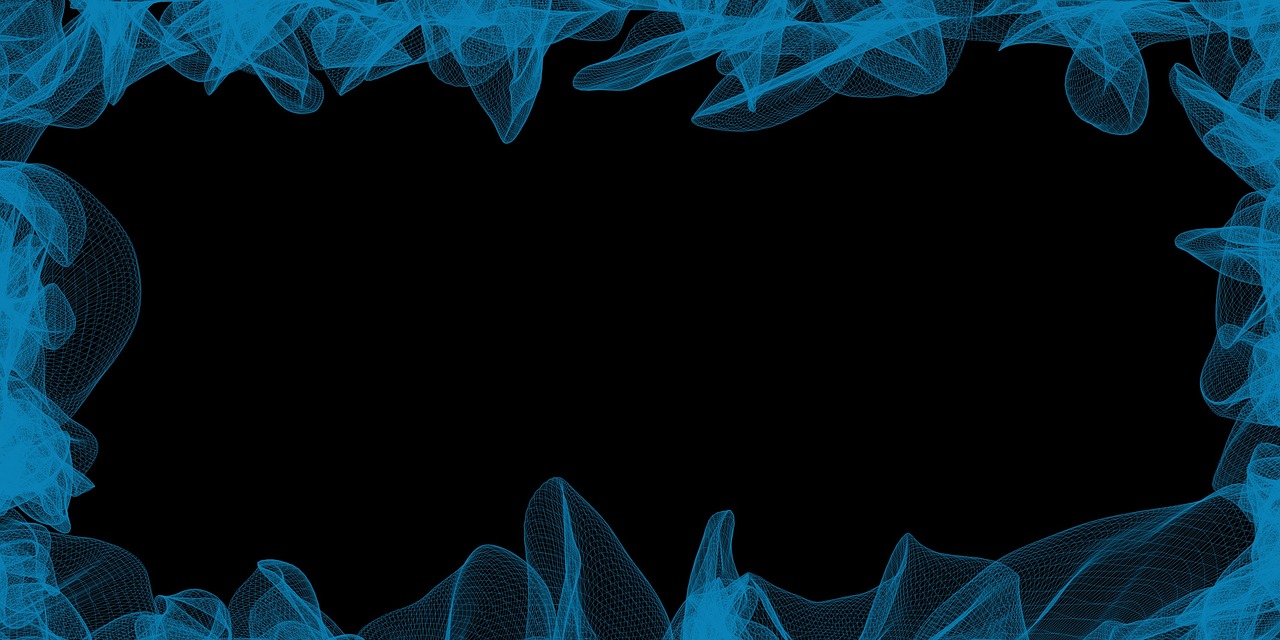
Philosophical Interpretations
The intersection of metaphysics and subatomic phenomena opens up a fascinating realm of philosophical interpretations that challenge our conventional understanding of existence. As we delve deeper into the implications of quantum mechanics, we encounter profound questions that have puzzled thinkers for centuries. For instance, what does it mean for something to exist if its very nature is defined by probabilities rather than certainties? This leads us to explore various philosophical theories that attempt to make sense of the subatomic world.
One of the most prominent debates in this sphere is between realism and anti-realism. Realists argue that the universe exists independently of our observations, suggesting that subatomic particles have definite properties whether or not we measure them. In contrast, anti-realists assert that the act of observation plays a crucial role in determining the state of particles, implying that reality is somehow dependent on our consciousness. This dichotomy raises critical questions about the nature of reality itself. Are we simply observers in a universe that exists independently, or do our perceptions actively shape the fabric of existence?
Another intriguing aspect of this discourse is the relationship between consciousness and the subatomic realm. Some theories propose that consciousness is not merely a byproduct of physical processes but may actually influence the behavior of particles at the quantum level. This idea aligns with interpretations such as the Copenhagen interpretation, which suggests that the act of measurement collapses the wave function, determining the state of a particle. If consciousness truly has this power, then what does that imply about our role in the universe? Are we not just passive observers but active participants in the unfolding of reality?
To further illustrate these philosophical interpretations, consider the following table that summarizes key positions in the realism vs. anti-realism debate:
| Position | Description | Implications |
|---|---|---|
| Realism | Belief that the universe exists independently of observation. | Subatomic particles have definite properties regardless of measurement. |
| Anti-Realism | Belief that observation affects the state of reality. | Reality is shaped by consciousness and measurement. |
As we navigate these philosophical waters, it becomes clear that the implications of subatomic phenomena extend beyond the realm of physics. They challenge our understanding of existence, consciousness, and the very nature of reality. The questions raised by quantum mechanics invite us to reconsider our assumptions and explore the deeper connections between our mind and the universe. It's as if we're peering into a cosmic mirror, reflecting not just the world around us but also the very essence of our being.
- What is the significance of wave-particle duality in philosophy? Wave-particle duality challenges our understanding of reality, suggesting that particles can exist in multiple states until observed, which raises questions about the nature of existence itself.
- How does quantum entanglement relate to consciousness? Quantum entanglement implies that particles can be interconnected regardless of distance, leading to philosophical inquiries about the nature of information transfer and the role of consciousness in shaping reality.
- What are the implications of realism and anti-realism for scientific inquiry? These positions influence how we interpret experimental results and the nature of scientific theories, with realism supporting an objective reality and anti-realism suggesting that theories are constructs shaped by observation.

Realism vs. Anti-Realism
The debate between realism and anti-realism is one of the most intriguing discussions in the realm of metaphysics, particularly when it intersects with the enigmatic world of quantum mechanics. At its core, realism posits that the universe exists independently of our perceptions or consciousness. In other words, the world is out there, waiting to be discovered, regardless of whether we are aware of it or not. On the flip side, anti-realism challenges this notion, suggesting that our understanding of reality is heavily influenced, if not entirely constructed, by our perceptions and experiences. This philosophical tug-of-war raises fundamental questions about the nature of existence itself.
In the context of subatomic particles, this debate becomes even more fascinating. For instance, consider the implications of quantum mechanics, which suggests that particles can exist in multiple states until observed. This phenomenon raises the question: does reality exist in a definite state when unobserved, or does it only take shape through our observation? Realists argue that the properties of particles are intrinsic to them, independent of our observation. In contrast, anti-realists might contend that these properties are not determined until they are measured, leading to a view that reality is more fluid and subjective than we previously thought.
To further illustrate these two perspectives, let’s break down their key distinctions:
| Aspect | Realism | Anti-Realism |
|---|---|---|
| Existence of Reality | Independent of observation | Dependent on perception |
| Nature of Truth | Absolute and objective | Relative and subjective |
| Role of Observer | Passive; reality exists regardless | Active; observation shapes reality |
This dichotomy not only influences how we interpret the behavior of subatomic particles but also how we understand our place within the universe. If we lean towards realism, we might view ourselves as explorers uncovering the mysteries of a pre-existing reality. However, if we embrace anti-realism, we could see ourselves as co-creators of reality, where our consciousness plays a pivotal role in shaping the world around us. This perspective can be both liberating and daunting, as it implies a level of responsibility for how we perceive and interact with the universe.
Ultimately, the realism versus anti-realism debate invites us to reflect on our epistemological foundations. It challenges us to consider how our beliefs about the nature of reality influence not only our scientific inquiries but also our philosophical and existential musings. Are we merely observers in a grand cosmic play, or do we have a hand in writing the script? As we delve deeper into the mysteries of the subatomic world, these questions become increasingly relevant, reminding us that our quest for understanding is as much about the universe as it is about ourselves.
- What is realism in the context of metaphysics?
Realism is the philosophical viewpoint that asserts the existence of an objective reality that is independent of our perceptions or beliefs. - How does anti-realism differ from realism?
Anti-realism argues that our understanding of reality is shaped by our perceptions and experiences, suggesting that reality may not exist in a fixed state when unobserved. - Why is the debate between realism and anti-realism important?
This debate influences our understanding of existence, consciousness, and the nature of scientific inquiry, particularly in the realm of quantum mechanics.

Consciousness and Reality
When we dive into the depths of consciousness and its relationship with reality, we enter a realm that feels both familiar and utterly alien. Imagine standing at the edge of a vast ocean, where each wave represents a thought or perception, and the ocean itself is the universe we inhabit. This analogy helps us grasp the profound connection between our conscious experience and the fabric of reality. But what does it really mean to say that consciousness influences reality? Are we merely observers, or do we play an active role in shaping the world around us?
To explore this question, we must first understand that consciousness is not just a passive state of awareness. It is an active participant in the dance of existence. Some theories suggest that consciousness itself may be a fundamental aspect of the universe, akin to space and time. This idea posits that our thoughts and perceptions might not just reflect reality but actually contribute to its formation. It's as if our minds are not just looking at the stars but are also part of the cosmic tapestry that weaves them together.
Consider the implications of this viewpoint. If consciousness can shape reality, then every thought, intention, and belief we hold could potentially manifest in the physical world. This notion resonates with various philosophical traditions, from Eastern philosophies that emphasize the interconnectedness of all things to modern quantum theories that hint at the observer effect—where the act of observation alters the observed phenomenon. The question then arises: Are we the creators of our reality, or are we merely participants in a pre-existing framework?
Furthermore, the relationship between consciousness and reality raises intriguing questions about the nature of existence itself. Are we living in a deterministic universe where everything is predetermined, or is there room for free will and creativity? This debate is not just academic; it has profound implications for how we view ourselves and our place in the universe. If consciousness can influence reality, then it empowers us to take responsibility for our thoughts and actions, fostering a sense of agency that can be both exhilarating and daunting.
In light of these considerations, let's examine a few key points:
- Consciousness as a Fundamental Element: Some theories propose that consciousness is as essential as matter and energy, suggesting a deep interconnection between mind and universe.
- The Observer Effect: Quantum mechanics indicates that the act of observation can influence outcomes, hinting at a profound link between consciousness and the physical world.
- Philosophical Implications: The nature of reality may be subjective, shaped by individual perceptions and experiences, leading to diverse interpretations of existence.
Ultimately, the exploration of consciousness and reality is a journey filled with wonder and mystery. It's a path that invites us to question our assumptions and expand our understanding of what it means to exist. As we continue to unravel the complexities of the universe, we may find that consciousness is not just a byproduct of our brains, but a vital force that interacts with the cosmos in ways we have yet to fully comprehend.
- What is the relationship between consciousness and reality?
Consciousness may influence reality by shaping our perceptions and experiences, suggesting that our thoughts and beliefs can manifest in the physical world. - How does quantum mechanics relate to consciousness?
Quantum mechanics introduces concepts like the observer effect, where the act of observation alters outcomes, highlighting a potential link between consciousness and the physical universe. - Are we the creators of our reality?
This is a philosophical question, but many theories suggest that our consciousness plays an active role in shaping our experiences and, by extension, our reality.
Frequently Asked Questions
- What are subatomic particles?
Subatomic particles are the fundamental building blocks of matter. They include protons, neutrons, and electrons, which combine to form atoms. These particles exhibit unique characteristics that challenge our traditional understanding of physics.
- How does quantum mechanics relate to subatomic particles?
Quantum mechanics is a branch of physics that provides a framework for understanding the behavior of subatomic particles. It reveals that these particles can exist in multiple states simultaneously and behave in ways that defy classical physics, fundamentally altering our perception of reality.
- What is wave-particle duality?
Wave-particle duality is a core concept in quantum mechanics that states particles, like electrons, can exhibit both wave-like and particle-like properties. This duality challenges our classical notions of existence and suggests that the nature of reality is far more complex than we previously thought.
- What are the implications of wave-particle duality?
The implications of wave-particle duality extend beyond physics. It influences metaphysical perspectives by suggesting that reality is not as fixed as it seems. This duality encourages us to rethink our understanding of existence and the nature of consciousness itself.
- Can you explain quantum entanglement?
Quantum entanglement is a phenomenon where two or more particles become interconnected in such a way that the state of one particle instantly influences the state of another, regardless of the distance separating them. This challenges our traditional views on information transfer and the nature of reality.
- What philosophical interpretations arise from subatomic phenomena?
Subatomic phenomena lead to various philosophical interpretations, including debates between realism and anti-realism. These discussions explore whether the universe exists independently of our observation or if consciousness plays a fundamental role in shaping reality.
- How does consciousness relate to the subatomic world?
The relationship between consciousness and the subatomic realm raises intriguing questions. Some theories suggest that consciousness may influence quantum events, leading to a deeper understanding of how we perceive and interact with reality at a fundamental level.






